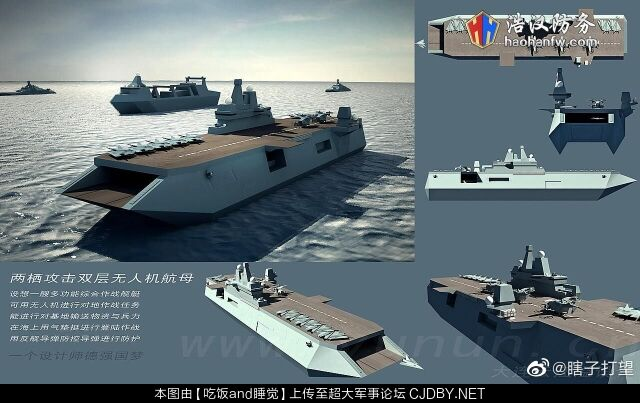This post on CJDBY has some interesting thoughts on what the 076 could look like.
I don't agree with some of them, but one of his idea seems very interesting to me.
Remember the inboard-elevator and the UAV deck mentioned in the files? I was quite confused about why 076 still uses inboard elevator with all the crazy stuff going on. This OP mentioned the biggest advantage of inboard elevators is that they can reach much lower levels than deck edge elevators. So the "UAV deck" mentioned might be under the hangar deck, and that's why inboard elevators would be necessary. He thinks the UAV deck is shared with the vehicle stowage thus could store UAV or vehicles depending on the mission.
If this is true then I guess it's still quite possible that besides the inboard-elevator(s) (works for both the hangar deck and the UAV deck), there's also deck edge elevator(s) that works only for the hangar deck?
He has some other interesting ideas but it's quite long so excuse me for not translating the entire post.

